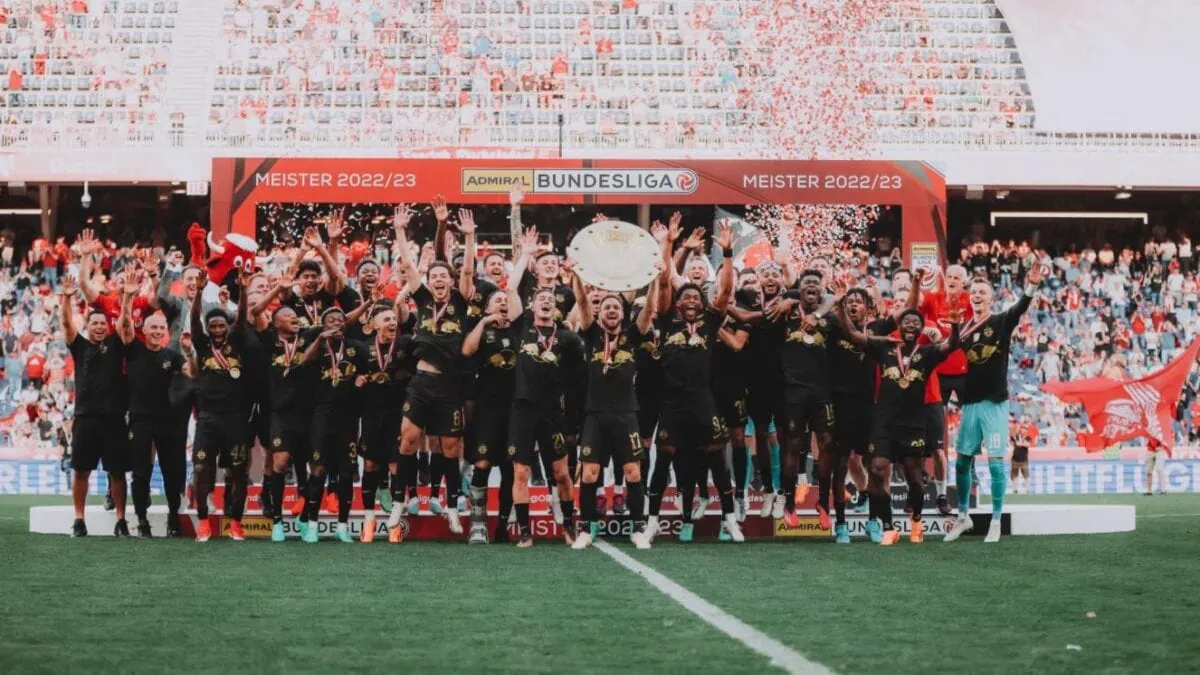The season that has just concluded has left a lot to discuss and process. The tenth title in a row is in the pocket, but for the first time in a while, Red Bull Salzburg encountered real competition in all of the domestic tournaments, and the long-distance title race was as close as it could have been with the current status quo in the league. The final result of missing out on the cup and only sealing the title in late May, with two matchdays to play, is unusually narrow for a team that normally has no direct rivals in the league for a series of obvious factors.
Nevertheless, the club’s sporting director Christoph Freund, in his usual manner, concluded that this season deserved a 1- school grade – just a bit off the best possible mark. But was it really like that? Isn’t that an attempt to sugarcoat a truly difficult stint in front of the media? Let’s have a look at some talking points to see what was the reason for that minus mark.
Second season syndrome: Jaissle’s team performed worse by all statistics this year
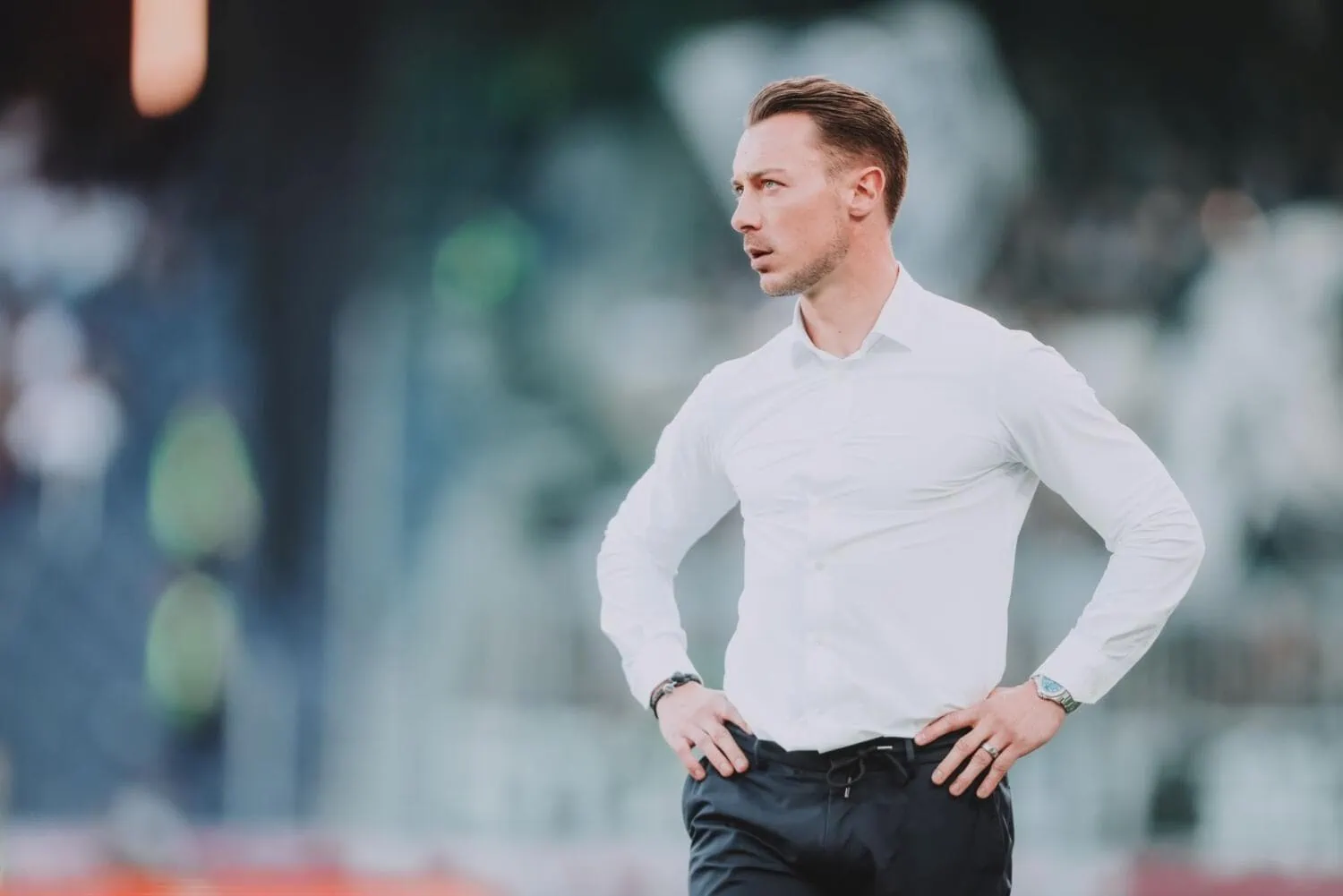
Matthias Jaissle’s first season at the helm was fairly strong from all points of view: confident results on domestic level, decent international campaign (if we pretend no one remembers the second leg against Bayern – but an extremely young team and a novice manager are allowed to have a mishap of this magnitude every once in a long while), and a clear dominant style of play backed by a strong set of key statistics, with a bigger emphasis on defense than usual, but still with a recognizable concept that fell well into the margins of what we all know as “Red Bull football”. The picture was uniform and well-defined.
But if we take a deep dive into stats for this season, comparing them to what we saw a year ago, the difference becomes drastic. All key values have dropped, with some being very noticeably lower than in Jaissle’s first season. Here’s a simple comparison table for the most basic of them – data sample represents all games of the season across all competitions, excluding friendlies, calculated as average per game, and it is provided by Instat.

The drop is evident and goes through all significant values, forming a trend that resonates with the visual impression of what was happening on the pitch. Seems like a classic case of a second season syndrome, a well-known football stereotype that, however, often finds reflection in real life. But let’s look even deeper.
Change in style: intentional or unintentional?
While defense as a whole remained more or less stable throughout the season, one of the biggest weaknesses this season was the lack of intensity and danger with the ball. Even though a part of that can be explained with the squad situation at almost any given moment of the season, with an immense number of injuries and bad bouts of form that most attacking players had, the numbers say that it was rather a systematic issue that appeared early on and wasn’t resolved until the end. Let’s focus on several numbers describing ball-playing and attacking statistics.

Another major issue this season was attacking speed – unlike previous several seasons, Salzburg found themselves in deep mid-table regarding direct speed, the speed with which the ball is moved upwards in possession, according to Opta. With Sturm Graz leading with 2,07 m/s, Salzburg only had 1,76 m/s on average – around the league average, with Austria Klagenfurt being the slowest with 1,61 m/s.

Source: Opta Analyst
Instead of a faster direct style, Salzburg moved the ball up the pitch in complicated multi-pass sequences at a relatively low speed.
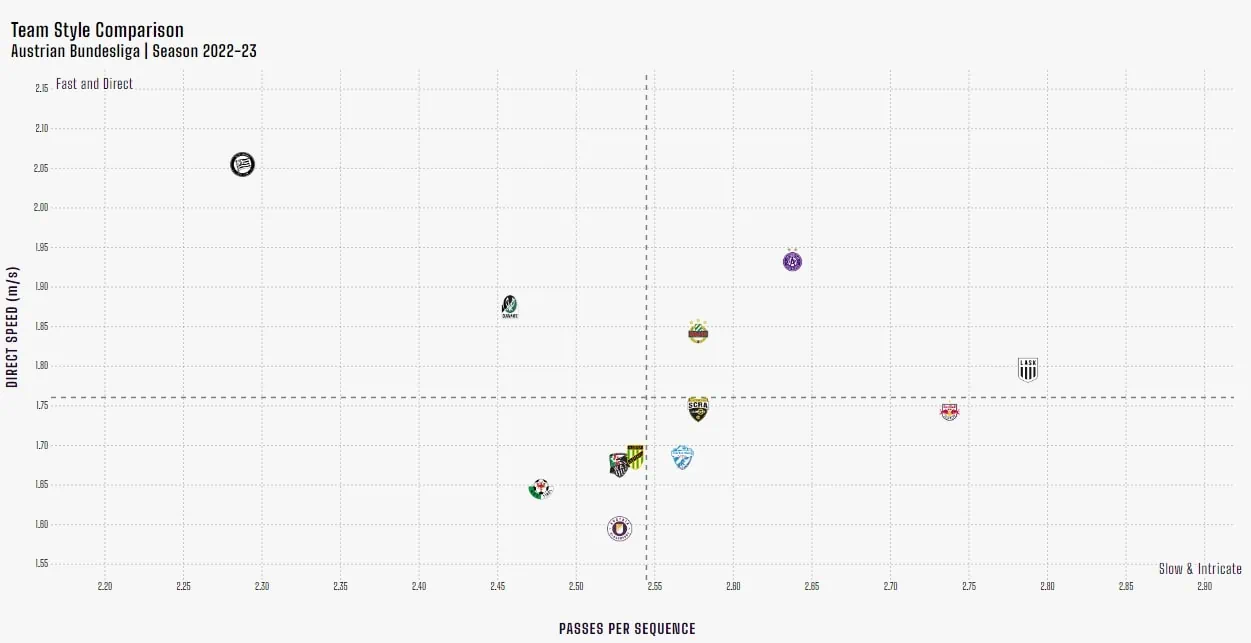
This picture shows a much less intense, less vertical, less attacking-at-all-costs-oriented, cautious style of play – a pretty unusual sight to what everyone normally expects from Red Bull Salzburg. While PPDA (7,6 in 2022/23, the lowest of the league, as usual) and pressing/counterpressing values remain on the normal intense level, difficulties and lack of direct solutions after regaining possession were evident all season.
Second half stats showcase even bigger issues
All of this is even not the most curious thing about stats this season: the shift began right during the summer preparation, but another leap in the same direction was made during winter training. The team that emerged from the break was even more inert, slower to the point of suspicions of being not fully ready from a physical point of view in the media, with less pressing intensity and numerical engagement, and furtherly plagued with injuries.
We can make the same tables, but this time comparing the first half of 2022/23 with the second one – and the difference, albeit not as huge as the gap between two seasons, will clearly show the worsening trend.


One way or another, there is one unanswered question left: was this shift in the football philosophy only caused by external factors, like the squad situation, injuries, potential consequences of the athletic preparation, and disrupted season schedule because of the World Cup and even longer break than usual, or was it Jaissle’s conscious adjustment that went slightly out of hand and almost costed the club too much, worsened by the aforementioned factors? Only time – if Jaissle really stays for his third year, which seems likely at this point – will show.
Injuries: another massively disrupting factor

Another obvious reason why Salzburg encountered problems this season was connected to injury-related absences. This year Salzburg proudly took over Rapid Vienna’s usual Hospital FC title, and at a peak point – coincidentally, right against Rapid in late April – had 12 players out at the same time, a whole starting XI bar the goalkeeper and two additional field players on the pitch. Key injuries like the never-ending saga with Fernando, Noah Okafor and Luka Sucic’s absences at the end of the season, left-back issues with no proper back-up for Andreas Ulmer (who wasn’t at 100% for a large part of the year either) because of Daouda Guindo’s enigmatic knee problems – all of that combined had a huge impact on how this season developed, and any of these names makes you wonder about potential “what ifs”.
To have a closer look at this topic, you can read Christoph Bosnjak’s brilliant analisys of this issue (Der FC Red Bull Salzburg und die Verletzungsmisere). In any case, the above-average amount of simultaneous injuries not only has a massive negative impact on the options and scenarios available for the coaching staff, but also casts a shadow on the club’s backroom. No one from Red Bull Salzburg directly addressed this issue in the media, but one or another classic cryptical statement from Matthias Jaissle in the final weeks of the season could leave a hint that there are some discussions behind the thick curtain.
Salzburg lacked fuel in attack this season
On top of tactical issues with the attack, intentional or not, it’s hard to ignore the fact is the second year in a row when Salzburg had no striker crossing the coveted 20-goal mark.
Benjamin Sesko was not that far from achieving that, though, with his 16 goals out of 18,78 xG – and that was in spite of his problems over the course of the season. RBS’s top scorer struggled with form in late autumn and early spring, which saw him starting the second half of the season on the stands, with Jaissle openly explaining to the press that he was only fifth choice for his position at that point. That push, as it turned, was necessary for the young Slovene, and the trend was overturned. He still remained one step behind the fierce duel between Guido Burgstaller and Haris Tabakovic, and eventually took only 4th place, with Tai Baribo climbing to the third position with 17 goals, but the season ended with a really solid run.
However, the next Salzburg resident to be seen on the top scorers’ list is Junior Adamu (10), sharing the tenth place with Atdhe Nuhiu. It’s fairly symptomatic, given the injuries in attack and the overall tendency in the team – and it continues the trend from last year, when Karim Adeyemi’s 19 goals (top of the league) were the only contribution to the top list, and no one else crossed the 10-goal margin. It’s clear that the current squad doesn’t feature players with a killer goalscoring instinct like Patson Daka (let’s leave Erling Haaland’s case out of the equation for obvious reasons) – but that contributes to the overall picture.
Philipp Köhn, hero of the season, kept learning on the fly
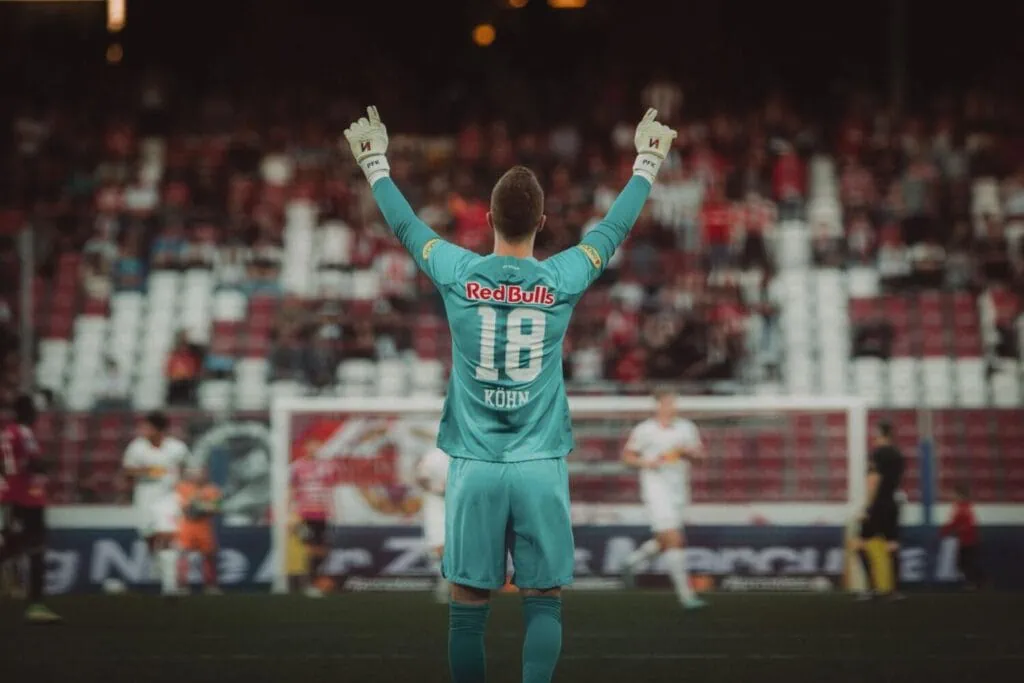
One of the undoubted main characters of the season turned out to be Philipp Köhn. But, as hard it is to remember that after the incredible form he had in the final months of the season, his performances at the beginning were not as impeccable. Even Matthias Jaissle had to protect him from the mediatic criticism in August after several hardly explainable blunders. But this confidence boost worked like magic, and already by the end of autumn we’ve seen a much more complete keeper in Salzburg’s goal. This progress went on further, and his second half stats are also indicating continuing improvement.
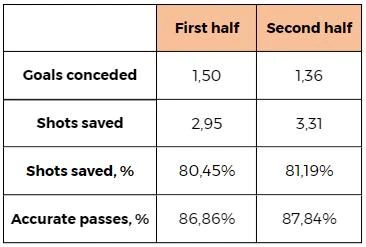
Towards the second half Köhn started being used in intricate buildup less frequently, which led to a slight decrease in his passing stats and a minor increase in long passes. This is slightly curious, as it opposes the general tendency around what was happening further up the pitch in the second half of the season, where horizontal short passing started to take over.
Another of Köhn’s evident weaknesses – shots aimed directly at the top corner of the goal – was also addressed during the season, and Instat’s graphics comparing saved and missed shots on goal shows a clear difference.

What’s next?
Every summer since the beginning of the Christoph Freund era in Salzburg begins with an overhaul, so every June seems to be like Groundhog Day for everyone following the club in one role or another. The squad expects several major departures, some already confirmed, some still brewing, but that’s not a new situation for a chameleon club like Salzburg.
Still, this time it’s Matthias Jaissle who is in the spotlight. As it stands right now, in mid-June, just several days before the start of the summer pre-season, he’s set to stay at the helm for his third season, the longest stint any coach has had since the beginning of the Red Bull times. This third season is destined to clear things that were left unanswered in the past few months: what is the direction this team is heading in from the tactical and strategical point of view, how big was the impact of external factors, and how developed are the head coach’s problem-solving skills.

